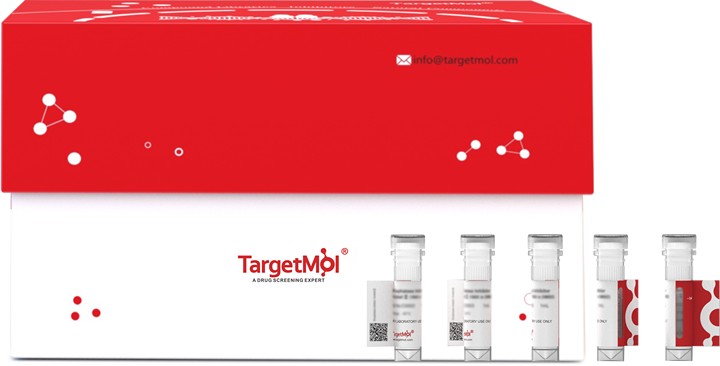Shopping Cart
- Remove All
 Your shopping cart is currently empty
Your shopping cart is currently empty

RANKL/TNFSF11/CD254 Protein, Mouse, Recombinant (aa 158-316, His) is expressed in HEK293 Cells. The accession number is O35235-1.

| Pack Size | Price | Availability | Quantity |
|---|---|---|---|
| 50 μg | $462 | Backorder | |
| 500 μg | $2,950 | Backorder |
| Biological Activity | 1. Immobilized Recombinant Human Osteoprotegerin/TNFRSF11B Protein (Fc Tag) at 2 μg/mL (100 μL/well) can bind Recombinant Mouse RANKL/TNFSF11 Protein (His Tag), the EC50 is 20-60 ng/mL. 2. The bioactivity of hRANKL was determined by measuring the ability of hRANKL to induce TRAP activity in Raw 264.7 cells. The ED50 for this effect is typically 1-10 ng/mL. |
| Description | RANKL/TNFSF11/CD254 Protein, Mouse, Recombinant (aa 158-316, His) is expressed in HEK293 Cells. The accession number is O35235-1. |
| Species | Mouse |
| Expression System | HEK293 Cells |
| Tag | N-His |
| Accession Number | O35235-1 |
| Synonyms | Trance,Tnfsf11,RANKL,OPGL,ODF,Ly109l |
| Construction | A DNA sequence encoding the Mouse TNFSF11 (O35235-1) (Lys158-Asp316) was expressed, with a polyhistidine tag at the N-terminus. |
| Protein Purity | ≥ 95% as determined by SDS-PAGE. ≥ 90% as determined by SEC-HPLC. |
| Molecular Weight | 19.16 kDa (predicted); 41.7 kDa and 23 kDa (reducing contition, due to glycosylation) |
| Endotoxin | <10 EU per mg protein. |
| Formulation | Lyophilized from sterile PBS, pH 7.4. Please contact us for any concerns or special requirements. Normally 5 % - 8 % trehalose, mannitol and 0.01% Tween 80 are added as protectants before lyophilization. Please refer to the specific buffer information in the hardcopy of datasheet or the lot-specific COA. |
| Reconstitution | Please refer to the lot-specific COA. |
| Stability & Storage | It is recommended to store recombinant proteins at -20°C to -80°C for future use. Lyophilized powders can be stably stored for over 12 months, while liquid products can be stored for 6-12 months at -80°C. For reconstituted protein solutions, the solution can be stored at -20°C to -80°C for at least 3 months. Please avoid multiple freeze-thaw cycles and store products in aliquots. |
| Shipping | In general, Lyophilized powders are shipping with blue ice. |
| Research Background | Tumor necrosis factor ligand superfamily member 11, also known as Receptor activator of nuclear factor kappa-B ligand, Osteoprotegerin ligand, TNFSF11, RANKL, TRANCE, OPGL and CD254, is a single-pass type II membrane protein that belongs to the tumor necrosis factor family. The receptor activator of nuclear factor-kappaB ligand (RANKL), its cognate receptor RANK, and its natural decoy receptor osteoprotegerin have been identified as the final effector molecules of osteoclastic bone resorption. RANK and RANKL are key regulators of bone remodeling and regulate T cell/dendritic cell communications, and lymph node formation. Moreover, RANKL and RANK are expressed in mammary gland epithelial cells and control the development of a lactating mammary gland during pregnancy. Genetically, RANKL and RANK are essential for the development and activation of osteoclasts and bone loss in response to virtually all triggers tested. Inhibition of RANKL function via the natural decoy receptor osteoprotegerin (OPG, TNFRSF11B) prevents bone loss in postmenopausal osteoporosis and cancer metastases. Importantly, RANKL appears to be the pathogenetic principle that causes bone and cartilage destruction in arthritis. RANK-RANKL signaling not only activates a variety of downstream signaling pathways required for osteoclast development, but crosstalk with other signaling pathways also fine-tunes bone homeostasis both in normal physiology and disease. In addition, RANKL and RANK have essential roles in lymph node formation, establishment of the thymic microenvironment, and development of a lactating mammary gland during pregnancy.Cancer ImmunotherapyImmune CheckpointImmunotherapyTargeted Therapy |

Copyright © 2015-2025 TargetMol Chemicals Inc. All Rights Reserved.